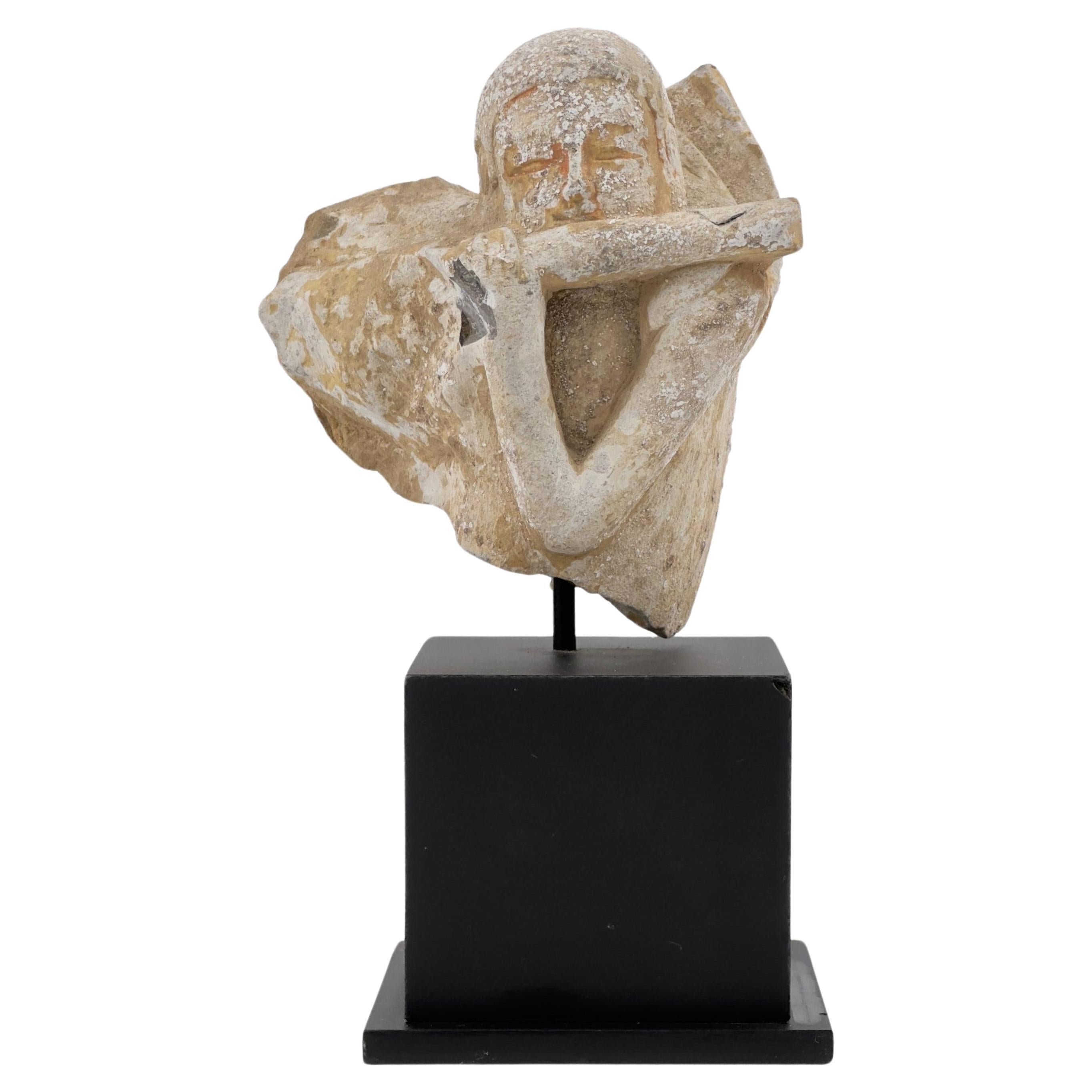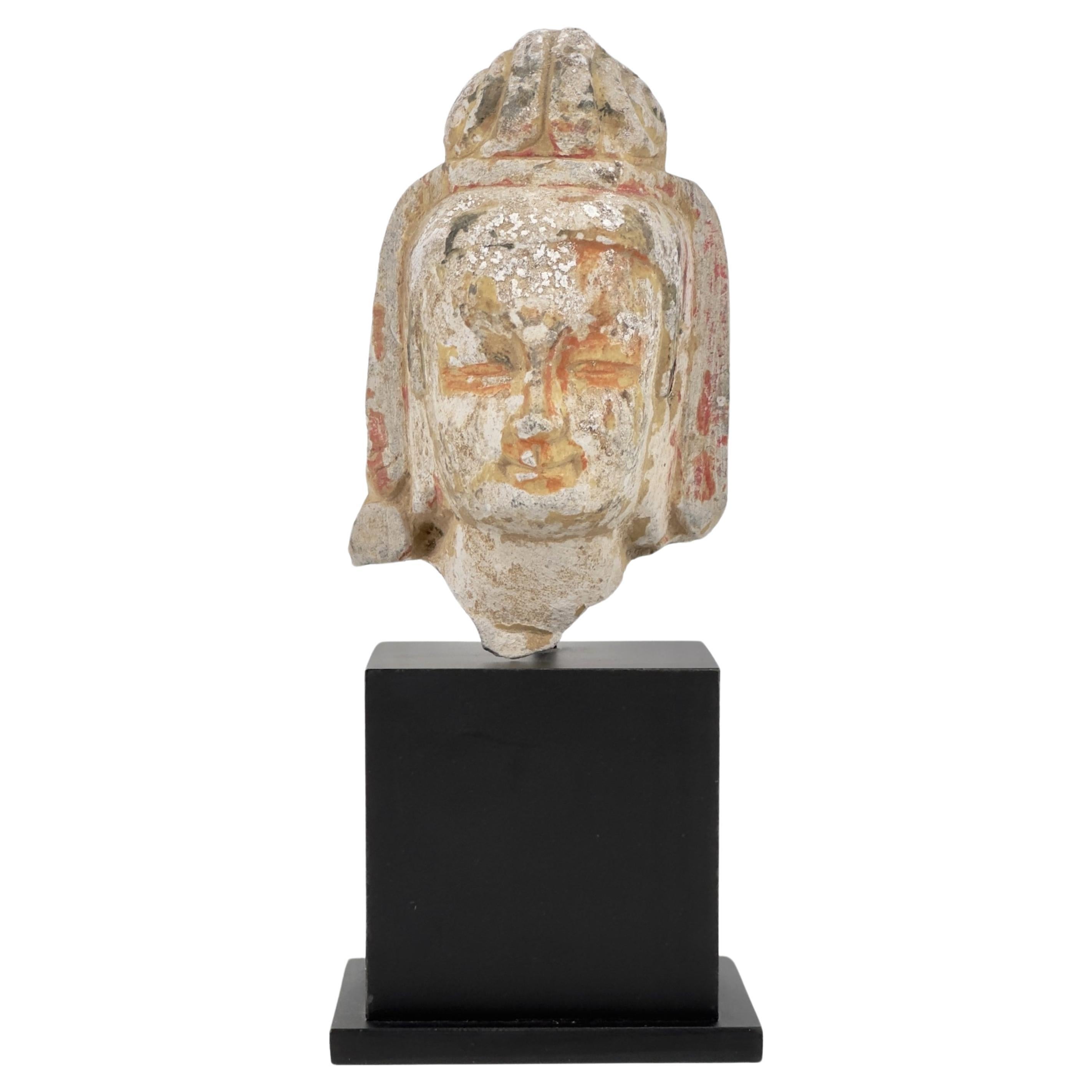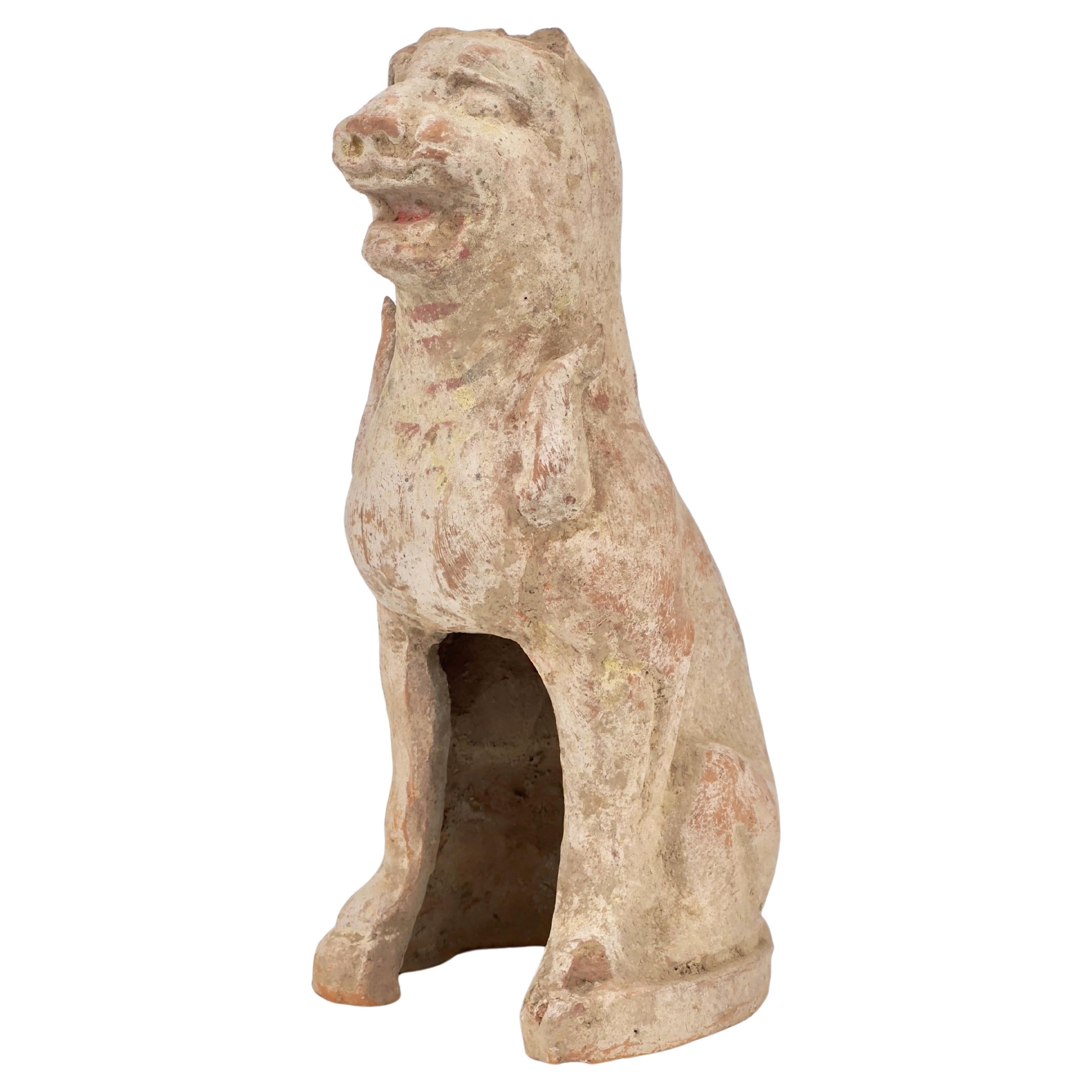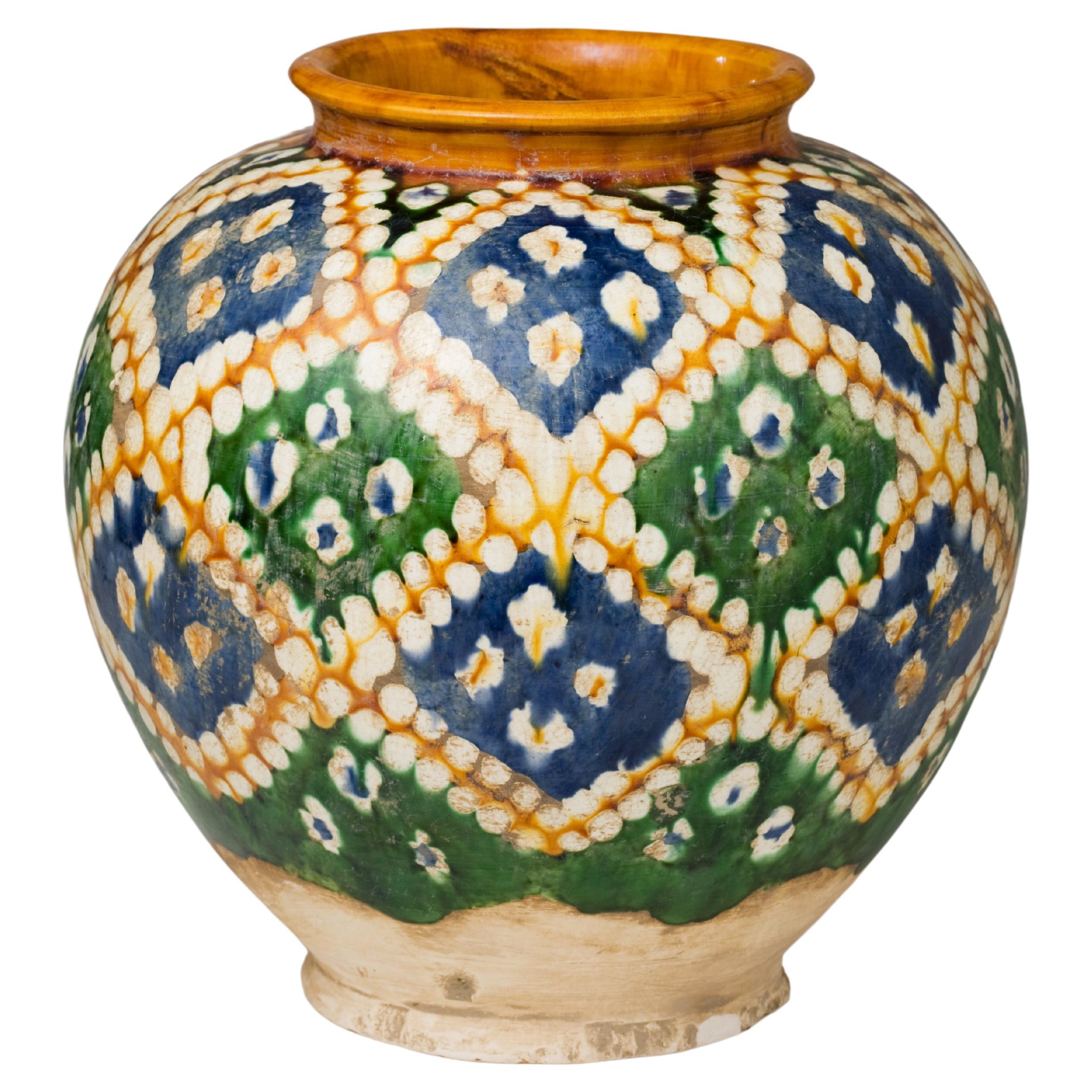Items Similar to Rare Lion Figurine Pillow, Tang Dynasty(618-907)
Want more images or videos?
Request additional images or videos from the seller
1 of 5
Rare Lion Figurine Pillow, Tang Dynasty(618-907)
About the Item
To meet overseas demand, shapes of Changsha wares were also greatly influenced by exotic elements from beyond China. For example, lion-shaped artifacts were found, as were a number of examples featuring decorative patterns in typical South Asian, Persian and Arabic styles.
Date : 9th Century
Type : Changsha Ware
Made in : Hunan province
Provenance : Acquired in 1999, Hongkong
Reference :
1) Christies Hongkong 2015 - The Pavillion Sale Chinese Ceramics & Works of Art - Lot 87
2) Timothy S.Y. Lam Museum of Anthropology - Changsha Ware
* Changsha Ware
Multiple “wares,” or styles, of pottery were developed during the Tang Dynasty. Many of these wares featured sancai glazing, a distinct color palette of lead glazes brushed, dipped, and poured over the vessel. Sancai glazed pottery used three colors derived from minerals: yellow-brown from iron oxide, green from copper oxide, and white from lead. Rarely, ceramicists included cobalt to create a blue glaze, but it was far too expensive for regular use. Changsha Ware is a classic example of a three-color sancai ware. Yet, it is also a style that revitalized ancient Chinese pottery. It was the first time that ceramicists perfected the underglaze painting technique. Artists decorated their clay bowls, jars, and figurines with colorful paintings and delicate calligraphy which were then protected by a transparent coat of lead glaze.
Changsha Ware was produced with distinct and recognizable designs and motifs. Painted designs often depict flowers, vines, and mountain landscapes. Some painting is simply splotches of color that accentuate stamped and molded clay ornaments. Being sold overseas, Changsha Ware integrated foreign cultural elements with traditional Chinese aesthetic principles.
Changsha Ware varies widely in form. To make sense of this variability, objects are typically classified into functional categories such as bowls, pots, ewers (or jugs), plates, boxes, lamps, pillows, candlesticks, censers, water droppers, mortars, paper weights, tea grinders, and figurines. Examples of these forms can be found below.
References : Timothy S.Y. Lam Museum of Anthropology
About the Seller
New to 1stDibs
Joined in the past six months.
4.5
Vetted Seller
These experienced sellers undergo a comprehensive evaluation by our team of in-house experts.
Established in 1999
1stDibs seller since 2023
Typical response time: <1 hour
- ShippingRetrieving quote...Ships From: seoul, Korea South
- Return PolicyA return for this item may be initiated within 10 days of delivery.
Auctions on 1stDibs
Our timed auctions are an opportunity to bid on extraordinary design. We do not charge a Buyer's Premium and shipping is facilitated by 1stDibs and/or the seller. Plus, all auction purchases are covered by our comprehensive Buyer Protection. Learn More
More From This SellerView All
- Changsha ewer, Tang Dynasty(618-907)Located in seoul, KRChangsha Ware has distinct and recognizable designs and motifs. Painted designs often depict flowers, vines, clouds and mountain landscapes. Some painting is simply splotches of colo...Category
Antique 15th Century and Earlier Chinese Tang Antiquities
MaterialsStoneware
- Changsha ewer, Tang Dynasty(618-907)Located in seoul, KRChangsha Ware has distinct and recognizable designs and motifs. Painted designs often depict flowers, vines, clouds and mountain landscapes. Some painting is simply splotches of colo...Category
Antique 15th Century and Earlier Chinese Tang Antiquities
MaterialsStoneware
- A Sancai-glazed pottery 'Haitai' Pillow, Tang dynastyLocated in seoul, KRThe pillow is intricately decorated with a vibrant pattern, demonstrating the craftsmanship and artistic sensibilities of the period. The Haitai is a creature from Chinese mythology,...Category
Antique 15th Century and Earlier Chinese Tang Antiquities
MaterialsEarthenware, Pottery
- A Rare Sancai-Glazed Pottery Jar, Tang DynastyLocated in seoul, KRThe jar is of globular shape and is decorated to the body with a geometric design band of lozenge-shaped motifs in blue, green, ochre and cream below a plain ochre everted mouth rim,...Category
Antique 15th Century and Earlier Chinese Tang Antiquities
MaterialsEarthenware
- Guardian Haitai Lion Pottery Figure, Northern Wei-Tang DynastiesLocated in seoul, KRThis figure represent a guardian haitai. The style of the figurine, with its facial features and remnants of paint, suggests it could be a part of funerary art, which was common in C...Category
Antique 15th Century and Earlier Chinese Tang Antiquities
MaterialsPottery, Stoneware
- Changsha Ewer, Tang DynastyLocated in seoul, KRIt features two small lug handles on either side of the neck and a spout opposite the main handle. This ewer might have been used for wine or other liquids, which were poured through...Category
Antique 15th Century and Earlier Chinese Tang Antiquities
MaterialsPottery, Stoneware
You May Also Like
- A Pair of Tang Dynasty (618-907 CE) Pottery Earth Spirit FiguresLocated in Chicago, ILA beautiful and rare pair of "Earth Spirit" guardians from the Shaanxi province region along the Yellow River valley of northern China. These figures were created from clay earthenwa...Category
Antique 15th Century and Earlier Chinese Tang Antiquities
MaterialsTerracotta
- Chimera (Pixiu) Terracotta Mythological Being - Tang Dynasty, China '618-907 AD'Located in San Pedro Garza Garcia, Nuevo LeonMagnificent Mythological Being "Chimera" with Human Face and Flaming Rays Halo. Orange Terracotta with Traces of Stucco and Painting. This creature is commonly known as Pixiu. Fierc...Category
Antique 15th Century and Earlier Chinese Tang Antiquities
MaterialsTerracotta
- Pair Tang Dynasty Dancing Figures, China '618-907AD'Located in Dallas, TXPeriod: Tang Dynasty (618 – 907 AD) terra-cotta over lead clay A pair of delicate Tang Dynasty dancers with long sleeves. Both ladies are wearing a long flowing dress with flared ...Category
Antique 15th Century and Earlier Chinese Antiquities
MaterialsTerracotta
- Monumental Buddha Torso White Marble Sculpture - Tang Dynasty China 618-907 ADLocated in San Pedro Garza Garcia, Nuevo LeonBeautiful and impressive early Tang white marble sculpture of headless Buddha, dressed in an elegant pleated toga. China. 618-907 AD. A true collectors piece. This magnificent piece...Category
Antique 15th Century and Earlier Chinese Tang Antiquities
MaterialsMarble
- Stunning Terracotta Standing Horse, Tang Dynasty, China '618-907 AD', TL TestLocated in San Pedro Garza Garcia, Nuevo LeonMagnificent standing horse in orange terracotta and traces of painting. With a finely decorated saddle and with the mane and tail hair braided. TL Test by Ralph Kotalla Lab NE: 09K12...Category
Antique 15th Century and Earlier Chinese Tang Antiquities
MaterialsTerracotta
- China 618-907 Ad Tang Dynasty Ancient Earthenware Sculpture of a Walking HorseLocated in Miami, FLStanding horse from the Tang Dynasty 618-907 AD. Beautiful sculptural piece of art from the Chinese ancient period of the Tang Dynasty (618-907 AD) featuring the finely sculptural figure of a horse, carefully made of earthenware clay pottery. The horse is standing in a very elegant and majestic position striding the four legs crossed. The animal has a slightly arched neck to the left looking forward and its extremely well modeled. The body is embellished with a beautiful saddle and intricate harnesses. The surface is treated with applications of natural color pigments such; white, light red and grays. Has a measurements of 343 mm by 140 mm by 356 mm (13.5 x 5.5 x14 Inches) (34.3 x 14 x 35.6 Cm). Tang dynasty or Tang Empire, was an imperial dynasty of China that ruled from 618 to 907, with an interregnum between 690 and 705. It was preceded by the Sui dynasty and followed by the Five Dynasties and Tend Kingdoms period. Historians generally regard the Tang as a high point in Chinese civilization, and a the golden age of cosmopolitan culture. Tang territory, acquired through the military campaigns of its early rulers, rivaled that of the Han dynasty. The Li family founded the dynasty, seizing power during the decline and collapse of the Sui Empire and inaugurating a period of progress and stability in the first half of the dynasty's rule. The dynasty was formally interrupted during 690–705 when Empress Wu Zetian seized the throne, proclaiming the Wu Zhou dynasty...Category
Antique 15th Century and Earlier Chinese Tang Antiquities
MaterialsEarthenware, Pottery





